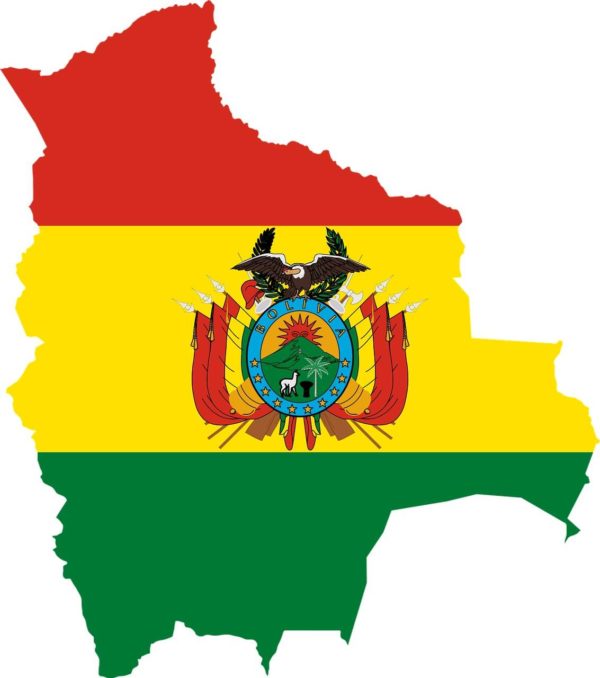If you are traveling around Bolivian lands or you have within your plans to visit this beautiful country of South America, you have many options to enjoy in that territory, you can even travel to several countries of the region if you have the budget and time required, because Bolivia limits the north and to the east with Brazil, while to the south it connects with Paraguay and Argentina and to the west with Chile and Peru.

Potosí City: One of the most representative sites of the Bolivian lands that during the colonial era was one of the most prosperous cities in this country, even in all America, which led to the construction of many buildings in the Baroque style such as temples, churches, monasteries, mansions and even palaces, which give it a unique beauty, the reason why UNESCO declared it as a World Heritage Site.
On the tour of this city, you can visit the largest silver mine in the world called Cerro Rico, as well as the Salar de Uyuni and Torotoro National Park, which is undoubtedly one of the most spectacular tourist places in the Bolivian lands.
Uyuni Salt Flats: Going to this site is a show because it is the largest salt desert in the world with about 12,000 km² and provides a natural spectacle of great beauty between January and March, since it is covered with water where the clouds are reflected as if it were a mirror. There it is also Incahuasi Island or “Isla del Pescado”, where there are lots of giant cacti up to 10 meters high.

Torotoro National Park: Also located in Potosi, it is a reserve of about 16,570 hectares which are located in the mountainous region that stands out for having canyons, giant rocks, waterfalls hidden in grottos and caves of great beauty such as Huaca Senka and Huma Jalanta. In addition, when you take a tour of this park, you will be able to observe fossilized dinosaur footprints dating back about 130 million years ago, as well as sea fossils of about 350 million years ago.
Eduardo Avaroa National Andean Wildlife Reserve: It is another of the tourist places of the Bolivian lands that impact because of its fabulous natural landscapes which are along 714,745 hectares, where there are volcanoes erupting hidden in these Andean mountains.
Noel Kempff Mercado National Park: It is a great nature reserve which was declared as a World Heritage Site by UNESCO and is located in the Amazon basin. It extends along 1,523,446 hectares, where a great biological biodiversity can be observed with more than 600 varieties of birds and a flora of 4,000 species.
Madidi National Park: It is an extraordinary natural reserve of Bolivian lands which extends along 1,895,740 hectares and is also located in the Amazon, where you can see jungle and mountainous landscapes, cloud forests, deep canyons and waterfalls of great beauty in a natural setting where 914 registered species of birds, a flora of 5.00 species, and some 156 species of mammals live; enough reasons for National Geographic Magazine to rank it as one of the 20 places with the greatest tourist interest worldwide, as well as for being also one of the areas with more biodiversity in the world.
Titicaca Lake: This spectacular lake is located on the border between Bolivia and Peru about 3,812 meters above sea level, being the highest navigable lake in the world. In its surroundings there are many islands where some Aymara communities live, becoming one of the tourist places of the Bolivian lands with more pre-Hispanic archaeological remains.

Sucre and Cal Orcko: Two places of the Bolivian lands that are worth visiting and that are only about 5 kilometres far each other. Sucre city is the constitutional and historical capital of Bolivia, which is characterized by its colonial architecture, for which it was declared as a World Heritage Site by UNESCO, while in the surroundings of Cal Orcko there are about 5000 footprints, which make it the site of the world’s largest fossilized footprints, some of them reaching 25 meters in length, which are believed to be titanosaurs’.
Jesuit Missions of Chiquitania: These missions are comprised of a set of 6 villages founded in the seventeenth and eighteenth centuries by the Society of Jesus, which are scattered throughout the Chiquitania region. These six towns are the following: Santa Ana, San Rafael, San Miguel, San José, San Francisco Javier and Concepción, which stand out for their architectural beauty based on baroque temples, wall paintings and wood carvings, which make them one of the most beautiful tourist places in Bolivia.

Samaipata Fort: This fort declared as a World Heritage Site by UNESCO is located in the town of Samaipata and is characterized by having an archeological enclave with ruins of a religious settlement of the Chané culture, where there is a sculpted rock 250 meters long by 60 meters wide, which is an unprecedented testimony throughout the Americas and that you can enjoy while traveling through Bolivian lands.





ALFA